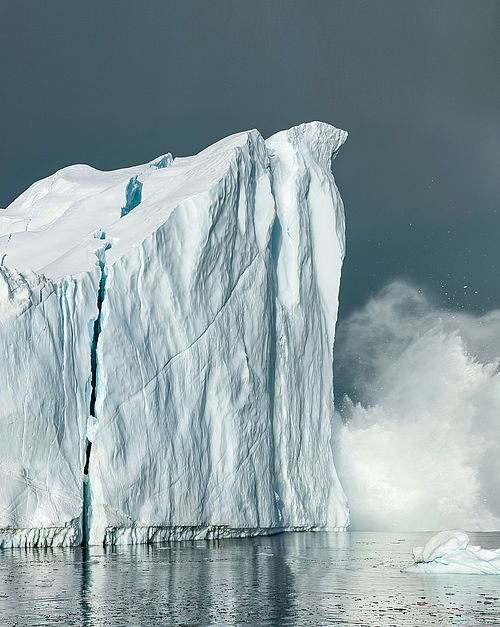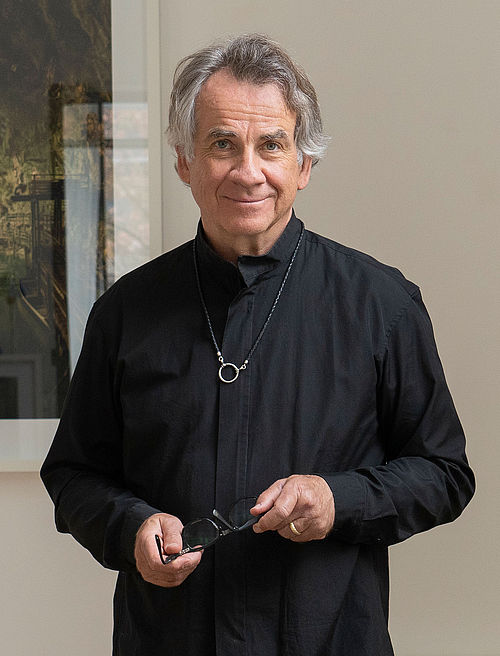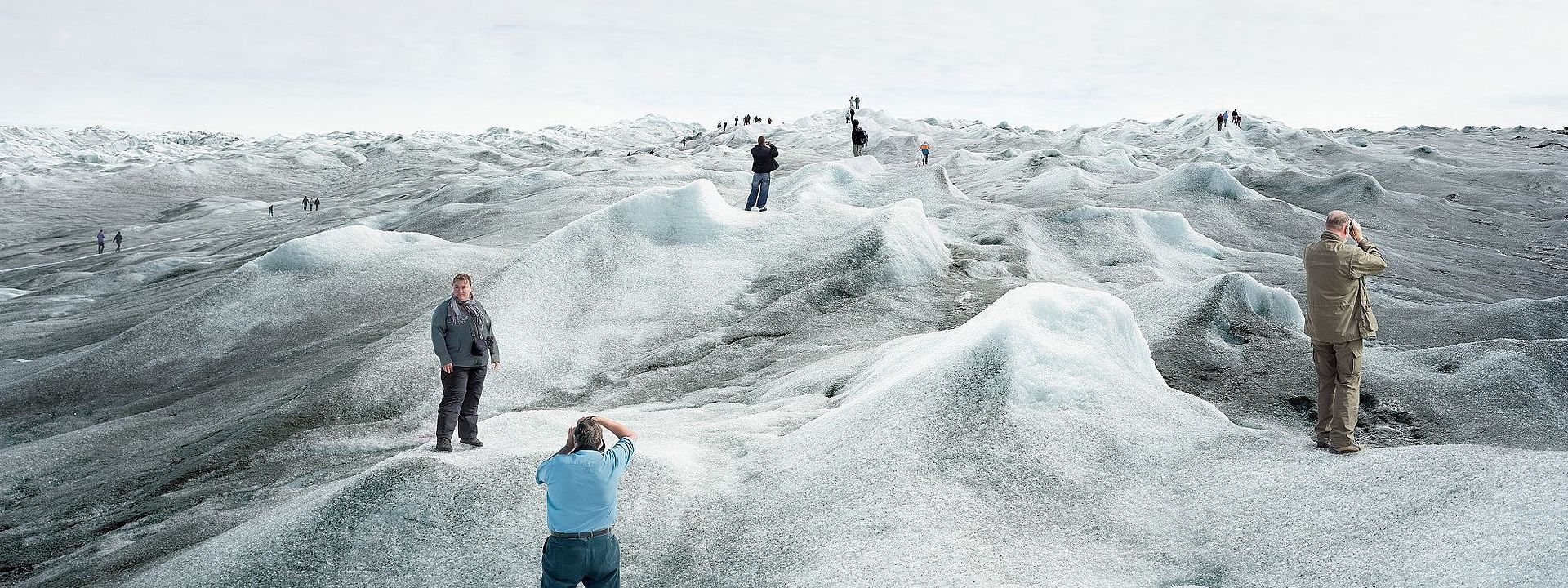Looking for the Signs

Fotocredit: Olaf Otto Becker
At times entrancingly beautiful and at other times vulnerable, fragile or even completely ravaged, many landscapes on our Earth are marked by the effects of climate change and human intervention in nature.
The photographer Olaf Otto Becker has been observing the human impact on nature for more than thirty years. In Greenland, he hiked 570 kilometers over the melting ice sheet. He had previously passed the country’s west coast by himself in a boat with his large format camera. Here, he captured in fascinating photographs the melting ice sheet, tourism in Greenland, and calving glaciers.
Becker also traveled to Southeast Asia and Australia with scientists and environmental activists on various occasions over many years, documenting threatened rainforests and artificial urban green spaces there. His work shows how environmental destruction and progress take place at the same time.
Most recently, he has photographed thawing permafrost zones during the Siberian summer as well as the Arctic Ocean harbor town of Tiksi. The remaining population hopes that global warming will open up new sea lanes along Siberia's northern coast and allow their town to flourish again economically. Here, human and non-human life are competing for space and resources.
Singapore, October 2013In "The Cloud," a huge greenhouse on an artificial island off the coast of Singapore, guests can experience "nature" - guaranteed free of leeches, spiders and snakes. Instead, bird sounds can be heard from hidden loudspeakers, and crocodiles are carved out of wood here.
Fotocredit: Olaf Otto Becker
Nuussuaq, Greenland, July 2006 In Greenland, people live directly between little civilization and a nature of extremes. Living is limited to a narrow coastal strip outside the ice sheet.
Fotocredit: Olaf Otto Becker
Buor-Khaya Gulf, northern Siberia, Russia, August 2019On the beach of Muostakh, a small island off the coast of northern Siberia, the wind and the waves are chiseling out unusual sculptures from the thawing permafrost. The temperatures that are rising due to climate change are causing the island to erode.
Fotocredit: Olaf Otto Becker
Destruction and Beauty
In the exhibition, technically accomplished photography can be seen while written descriptions bearing emotional witness to the photographer’s experiences can be read. Compellingly, Olaf Otto Becker unites documentation and artistic expression. Beauty and destruction often reside in the same moment. The exhibition moreover leads us to global flashpoints where man and nature collide. Signs of Change shows the effects of climate change and demands action to find solutions. Only if we make lasting changes to our relationship with nature will we be able to preserve the diversity of our habitat.
The Photographer

Fotocredit: Marion Becker
Born in 1959, Olaf Otto Becker studied communication design, philosophy, and religious studies. Since 1988, he has worked as an independent designer and photographer. He lives in Bad Tölz, Germany, and undertakes expeditions around the world.
Olaf Otto Becker’s photography has most recently been exhibited in Reykjavík, Amsterdam, London, Seoul, and Dresden, and around the world it has been included in prestigious collections, for example at the Metropolitan Museum of Art in New York, the National Museum of Photography in Copenhagen, as well as in the Art Collection of the German Bundestag.
More information about his work can be found on the artist’s website.
Outlook for second climate exhibition
Following on from "Signs of Change," the special exhibition "Thin Ice" will open at the Deutsches Technikmuseum at the end of November 2023. The exhibition takes visitors on a climate expedition. School classes and families will experience what it's like to do research in the Arctic. For more than a year, the research vessel "Polarstern" drifted through the polar sea from 2019. The team collected information on the change in the Arctic climate: a milestone for climate research.



